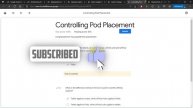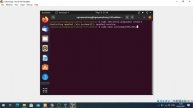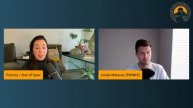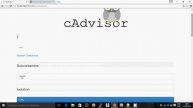Python - Python Programming - Features of Python - Applications of Python - Definition of Python
Python is an interpreted high-level general-purpose programming language. Its design philosophy emphasizes code readability with its use of significant indentation. Its language constructs as well as its object-oriented approach aim to help programmers write clear, logical code for small and large-scale projects.
Python is dynamically-typed and garbage-collected. It supports multiple programming paradigms, including structured (particularly, procedural), object-oriented and functional programming. It is often described as a "batteries included" language due to its comprehensive standard library.
Features of Python
1. Easy Language. Python is an easy language. smooth learning. simple syntax. easy to understand.
2. Readable. The Python language is designed to make developers life easy. Python uses indentation instead of curly braces.
3. Interpreted Language. IDLE (Interactive Development Environment). REPL structure (Read-Evaluate-Print-Loop).
4. Dynamically-Typed Language.
5. Object-Oriented. Procedural. Functional.
6. Popular and Large Community Support.
7. Open-Source. Open Source Community. Free Software.
8. Large and Rich Standard Library.
Flavors of Python
1. CPython: It is the standard flavor of Python. It can be used to work with C lanugage Applications.
2. Jython OR JPython: It is for Java Applications. It can run on JVM
3. IronPython: It is for C#.Net platform
4. PyPy: The main advantage of PyPy is performance will be improved because JIT compiler is available inside PVM.
5. RubyPython: For Ruby Platforms
6. AnacondaPython: It is specially designed for handling large volume of data processing.
7. StacklessPython: Small tasks which should run individually are called tasklets.
8. Pythonxy: This is pronounced as Python xy and written as Python(X,Y).
https://wiki.python.org/moin/BeginnersGuide
Beginner's Guide to Python
New to programming? Python is free and easy to learn if you know where to start! This guide will help you to get started quickly.
New to Python?
Read BeginnersGuide/Overview for a short explanation of what Python is.
Getting Python
Next, install the Python 3 interpreter on your computer. This is the program that reads Python programs and carries out their instructions; you need it before you can do any Python programming. Mac and Linux distributions may include an outdated version of Python (Python 2), but you should install an updated one (Python 3). See BeginnersGuide/Download for instructions to download the correct version of Python.
There are also Python interpreter and IDE bundles available, such as Thonny. Other options can be found at IntegratedDevelopmentEnvironments.
At some stage, you'll want to edit and save your program code. Take a look at HowToEditPythonCode for some advice and recommendations.
Learning Python
Next, read a tutorial and try some simple experiments with your new Python interpreter.
If you have never programmed before, see BeginnersGuide/NonProgrammers for a list of suitable tutorials.
If you have previous programming experience, consult BeginnersGuide/Programmers, which lists more advanced tutorials.
If English isn't your first language, you might be more comfortable with a tutorial that's been translated into your language. Consult python.org's list of Non-English resources.
Most tutorials assume that you know how to run a program on your computer. If you are using Windows and need help with this, see How do I Run a Program Under Windows.
Some sites offer in-browser coding for those who want to learn Python:
Codecademy
Coding Bootcamps
DataCamp
Dataquest for Python for data science.
HackInScience free and open source platform.
High School Technology Services for general Python
Print a cheat sheet of the most important Python features and post it to your office wall until you know the basics well.
Once you have read a tutorial, you can browse through Python's online documentation. It includes a tutorial that might come in handy, a Library Reference that lists all of the modules that come standard with Python, and the Language Reference for a complete (if rather dry) explanation of Python's syntax.
When you are ready to write your first program, you will need a text editor or an IDE. If you don't want to use Thonny or something more advanced, then you can use IDLE, which is bundled with Python and supports extensions.
This Python wiki also contains a page about Python One-Liners -- an obscure but interesting subculture in Python.
Complete list of Beginner's Guide pages
BeginnersGuide/Download
BeginnersGuide/Examples
BeginnersGuide/Help
BeginnersGuide/Mathematics
BeginnersGuide/NonProgrammers
BeginnersGuide/Overview
BeginnersGuide/Programmers
BeginnersGuide/Programmers (Cpp2Python.pdf)
BeginnersGuide/Programmers/SimpleExamples
Tutorials For Beginners
Pythonspot - Python Quiz
Python Challenge - A Python Quiz App on Android Platform
CS Circles - online lessons and graded exercises
Видео Python - Python Programming - Features of Python - Applications of Python - Definition of Python автора КодоГении
Видео Python - Python Programming - Features of Python - Applications of Python - Definition of Python автора КодоГении
Информация
3 декабря 2023 г. 0:09:32
00:17:15
Похожие видео






















